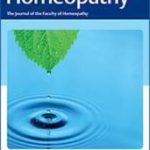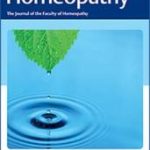Individualized Homeopathic Medicines for Low Back Pain in Lumbar Spondylosis: Double-Blind, Randomized, Placebo-Controlled Trial

Introduction Lumbar spondylosis (LS) is a degenerative disorder of the lumbar spine. Despite substantial research efforts, no gold-standard treatment for LS has been identified. The efficacy of individualized homeopathic medicines (IHMs) in LS has remained under-researched. In this study, the efficacy of IHMs was compared with identical-looking placebos in the treatment of low back pain associated with LS. Methods A double-blind, randomized (1:1), placebo-controlled trial was conducted at the National Institute of Homoeopathy, West Bengal, India. Patients were randomized to receive IHMs or placebos, along with standardized concomitant care for both the groups. The Oswestry low back pain and disability questionnaire (ODQ) was the primary outcome; the Roland-Morris questionnaire (RMQ) and the short form of the McGill pain questionnaire (SF-MPQ) were the secondary outcomes. Each was measured at baseline and every month for 3 months. The intention-to-treat (ITT) sample was analyzed to detect any inter-group differences using two-way repeated measures analysis of variance models overall and by unpaired t-tests at different time points. Results Enrolment was stopped prematurely because of time restrictions; 55 patients were randomized (verum: 28; control: 27); 49 were analyzed by ITT (verum: 26; control: 23). Inter-group differences in ODQ (F 1, 47 = 0.001, p = 0.977), RMQ (F 1, 47 = 0.190, p = 0.665) and SF-MPQ total score (F 1, 47 = 3.183, p = 0.081) at 3 months were not statistically significant. SF-MPQ total score after 2 months (p = 0.030) revealed inter-group statistical significance, favoring IHMs against placebos. Some of the SF-MPQ sub-scales at different time points were also statistically significant: e.g., the SF-MPQ average pain score after 2 months (p = 0.002) and 3 months (p = 0.007). Rhus toxicodendron, Sulphur and Pulsatilla nigricans were the most frequently indicated medicines. Conclusion Owing to failure in detecting a statistically significant effect for the primary outcome and in recruiting a sufficient number of participants, our trial remained inconclusive.






Lascia un commento
Devi essere connesso per inviare un commento.